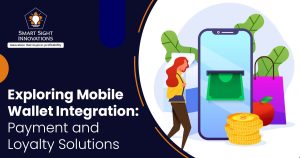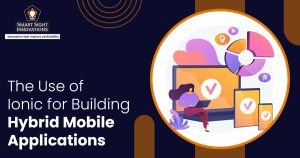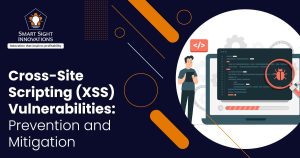 Open authorization (OAuth) has undergone a transformation from a complex and entirely exclusive protocol to a widely used, more adaptable and standardized framework. The first step was OAuth 1.0, which met the need for safe access delegation.
Open authorization (OAuth) has undergone a transformation from a complex and entirely exclusive protocol to a widely used, more adaptable and standardized framework. The first step was OAuth 1.0, which met the need for safe access delegation.
While OAuth 2.0 marked a significant advancement by streamlining the protocol, improving developer accessibility and supporting a wider range of platforms and application types. In this article, we look at the key differences between OAuth and OAuth 2.0 and their various applications.
Mobile App Authentication Basics
Mobile app authentication is a fundamental aspect of mobile application security, ensuring that only authorized users can access the app’s features and data. It is the process of verifying the identity of users before granting them access. Mobile app developers must carefully design and implement authentication systems to balance security and user convenience effectively. The basics of mobile app authentication are:
1. User Identification
Authentication starts with identifying users uniquely. Common identifiers include usernames, email addresses, or phone numbers. Some apps use biometric authentication, like fingerprint or facial recognition, for added security and user convenience.
2. Passwords and PINs
Traditionally, users create passwords or personal identification numbers (PINs) to prove their identity. Strong password policies and encryption are essential for protecting this sensitive data.
3. Multi-Factor Authentication (MFA)
To enhance security, many apps implement MFA. This involves combining something the user knows (password), something the user has (a mobile device) and something the user has (biometrics) for verification.
4. OAuth and Social Login
Apps often offer OAuth-based social login options, allowing users to authenticate using existing accounts on platforms like Google, Facebook, or Apple. This simplifies the registration and login process.
5. Token-based Authentication
Mobile apps typically use access tokens or session tokens to manage user authentication sessions securely. Tokens are short-lived, reducing the risk of unauthorized access.
6. User Session Management
After authentication, mobile apps maintain user sessions, typically using tokens, to keep users logged in while they use the app. It’s crucial to handle session expiration and logout securely.
7. Security Measures
App developers must implement security best practices to protect authentication data and prevent common attacks like brute force attacks, credential stuffing, and phishing attempts.
8. Biometric Authentication
Modern mobile devices offer biometric authentication methods such as fingerprint recognition and facial recognition. These enhance both security and user experience.
9. Device-Level Security
Mobile app authentication often leverages the security features of the underlying mobile operating system. This includes secure storage of credentials and secure communication with authentication servers.
10. Password Recovery and Reset
Apps should provide secure mechanisms for users to recover or reset their passwords if forgotten. This process should involve verifying the user’s identity through a secondary channel.
What is OAuth?
OAuth is a widely used and standardized framework for enabling secure and controlled access to protected resources on the internet without the need to share sensitive login credentials. It serves as a robust authentication and authorization protocol, particularly in the context of web and mobile applications.
At its core, OAuth provides a mechanism for third-party applications to gain limited access to a user’s data or services hosted on a different platform or service provider without needing to know or store the user’s username and password. Instead, OAuth uses a system of tokens to grant access permissions.
There are typically four main parties involved in an OAuth interaction:
- Resource Owner
This is the user who owns the data or services that the third-party application wants to access.
- Client
The third-party application, often referred to as the “client,” seeks authorization to access the user’s resources.
- Authorization Server
This is the intermediary server that authenticates the user and issues access tokens that the client can use to access the user’s resources.
- Resource Server
Stores and manages the protected resources and verifies access tokens for incoming requests, granting or denying access accordingly.
OAuth is used by various online platforms, including social media networks, cloud storage services and APIs, to allow users to grant specific permissions to applications while maintaining control over their data. It offers a more secure and user-friendly alternative to traditional sharing of login credentials, enhancing both user privacy and security in the digital landscape.
OAuth Vs. OAuth 2.0
OAuth and OAuth 2.0 are closely related, but there are significant differences between the two versions of the protocol.
1. Features
- OAuth
OAuth 1.0, was the original version of the OAuth protocol. It was published in 2010 and designed to address authorization needs for web applications and services.
OAuth 1.0 relied on digital signatures for request verification and was relatively complex to implement. It allowed users to grant third-party applications limited access to their resources without sharing their login credentials.
- OAuth 2.0
OAuth 2.0 is the second iteration of the OAuth protocol and was published in 2012. It aimed to simplify the protocol, making it more versatile and adaptable to a wider range of use cases, including mobile and native apps.
OAuth 2.0 introduced multiple grant types (flows), allowing clients to obtain access tokens via various methods. It focuses on access delegation and does not specify the method for request signing, which is left to extensions.
2. Key Differences
- Simplicity and Flexibility
OAuth 2.0 is significantly simpler to implement compared to OAuth 1.0. It offers a broader range of use cases without mandating cryptographic signatures, making it more adaptable to different scenarios.
- Multiple Grant Types
OAuth 2.0 introduced various grant types (flows) to accommodate different client types and security requirements, such as the Authorization Code Flow, Implicit Flow, Client Credentials Flow, and Resource Owner Password Credentials (ROPC) Flow. This flexibility was not present in OAuth 1.0.
- Scope of Application
OAuth 1.0 was primarily designed for web applications. In contrast, OAuth 2.0 is more versatile and can be used for web, mobile, desktop, and IoT applications.
- Token Handling
OAuth 1.0 relied on a combination of request and access tokens. OAuth 2.0 simplified this by introducing access tokens as the primary mechanism for accessing protected resources.
- Security
OAuth 2.0 introduced features like token expiration and the ability to revoke tokens, enhancing security. However, it also shifted more responsibility for security to implementers and extensions.
3. Use Cases
- OAuth 1.0 Use Cases
OAuth 1.0 was primarily used for web applications, including scenarios like accessing social media APIs and integrating third-party services into websites.
- OAuth 2.0 Use Cases
OAuth 2.0 is more versatile and widely adopted across various platforms. It is used in web applications, mobile apps, IoT devices, and desktop applications. It is commonly used for securing APIs, implementing single sign-on (SSO), and enabling social login.
OAuth 2.0 is the widely adopted successor to OAuth 1.0, offering simplicity, flexibility and versatility. While OAuth 1.0 had its merits, its complexity and limitations led to the development of OAuth 2.0, which better addresses the authentication and authorization needs of modern web and mobile applications. OAuth 2.0 has emerged as the accepted norm for protecting APIs and facilitating frictionless user interfaces in mobile apps and web services because of its adaptability and scalability.
OAuth 2.0 is considered more future-proof due to its adaptability and extensibility. It has continued to evolve with extensions and profiles that address specific use cases and security enhancements. Many major service providers and organizations have transitioned to OAuth 2.0, for its wide industry support and continued development, leading to a decline in the use of OAuth 1.0.
OAuth 2.0 Flow Types
OAuth 2.0 offers various flow types to accommodate a wide range of application scenarios while maintaining security and user consent. Selecting the appropriate flow depends on the specific use case, client type, and security requirements, ensuring that OAuth remains a versatile framework for authorization in the modern digital landscape. The five primary OAuth 2.0 flow types are:
1. Authorization Code Flow
The Authorization Code Flow is one of the most secure OAuth 2.0 flows, primarily designed for web and mobile applications that can maintain a secure back-end server. It involves several steps:
- The client (the application requesting access) redirects the user to the authorization server, including the requested permissions (scopes).
- The user authenticates with the authorization server.
- Upon successful authentication, the authorization server redirects the user back to the client application with an authorization code.
- The client sends the authorization code to its server, along with its client secret, to exchange it for an access token.
- The client can then use this access token to access the user’s protected resources on the resource server.
This flow is secure because it separates user authentication from the client application, reducing the risk of exposing sensitive credentials.
2. Implicit Flow
The Implicit Flow is designed for client-side applications, such as single-page web apps and mobile apps, where there’s no secure back-end server. In this flow:
- The client sends the user to the authorization server for authentication.
- Upon successful authentication, the authorization server immediately sends an access token back to the client as part of the URL fragment.
- The client can then use this access token to access resources on behalf of the user.
While this flow is simpler to implement, it’s considered less secure than the Authorization Code Flow, as it doesn’t involve the exchange of an authorization code for an access token. Careful handling of access tokens is essential in this flow.
3. Resource Owner Password Credentials (ROPC) Flow
ROPC Flow is suitable for trusted clients that can securely collect and store the user’s credentials, such as native mobile apps. In this flow:
- The user provides their username and password directly to the client application.
- The client sends these credentials to the authorization server, along with the requested scopes.
- If the credentials are valid, the authorization server responds with an access token.
ROPC Flow should be used sparingly, as it bypasses some of the security benefits of OAuth by exposing user credentials to the client. It’s recommended only when more secure flows like Authorization Code Flow or Implicit Flow are not feasible.
4. Client Credentials Flow
The Client Credentials Flow is designed for applications that don’t act on behalf of users but need access to their own resources. These could be internal services or APIs. In this flow:
- The client application sends its own credentials (client ID and client secret) to the authorization server.
- If the credentials are valid, the authorization server responds with an access token.
- The client can then use this token to access its own resources on the resource server.
This flow is suitable for machine-to-machine communication, where user involvement is unnecessary.
5. Device Authorization Flow (OAuth for Smart TVs and IoT)
The Device Authorization Flow is tailored for devices with limited user interfaces, such as smart TVs and IoT devices, where user input is challenging. In this flow:
- The user is presented with a code on their device and instructions to visit a URL on another device (e.g., a smartphone or computer).
- The user completes the authorization on the second device by entering the code and authorizing the client.
- Once authorized, the device can obtain an access token from the authorization server.
This flow addresses the challenges posed by devices without traditional user interfaces, ensuring that users can securely authorize their devices for access.
OAuth for Native Vs. Web Apps
OAuth implementation differs between native and web apps due to their unique characteristics and security considerations. The key differences and best practices for OAuth in native and web apps are:
1. OAuth in Native Apps
Native apps are platform-specific applications developed for mobile devices like iOS and Android or desktop systems. They run directly on the user’s device, offering a richer and more seamless user experience. OAuth in native apps often uses the Authorization Code Flow with Proof Key for Code Exchange (PKCE) for security. Here’s how it works:
- User Redirection
The native app initiates the OAuth process by redirecting the user’s device to the authorization server. This redirection typically happens via the device’s system browser.
- User Authentication
The user logs in and grants permissions through the authorization server’s login and consent screens, which are displayed in the system browser.
- Authorization Code
Upon successful authentication and authorization, the server returns an authorization code to the app via a custom Uniform Resource Identifier (URI) scheme or app deep link.
- Access Token Retrieval
The app exchanges the authorization code for an access token and possibly a refresh token by making a secure back-end API call to the authorization server. This call often includes the app’s client credentials.
- Accessing Resources
With the access token, the native app can make secure API requests to access the user’s resources on the resource server.
Native apps must handle security considerations with care and should securely store access tokens and refresh tokens. Techniques like the iOS Keychain or Android Keystore can be implemented. PKCE adds an extra layer of security to the Authorization Code Flow, protecting against code interception attacks.
Native apps should ensure that user consent screens are displayed securely and clearly within the system browser to prevent phishing.
2. OAuth in Web Apps
Web apps are accessed through web browsers and are often platform-agnostic. They run on web servers and are rendered in the user’s browser, which means they can be accessed on various devices with internet connectivity. Web apps commonly use the Authorization Code Flow without PKCE for OAuth implementation.
- User Redirection
The web app initiates the OAuth process by redirecting the user’s browser to the authorization server’s login and consent screens, which are displayed within the browser.
- User Authentication
The user logs in and grants permissions directly in the browser on the authorization server’s screens.
- Authorization Code
Upon successful authorization, the authorization server sends an authorization code to the web app’s specified redirect URI.
- Access Token Retrieval
The web app exchanges the authorization code for an access token by making a secure back-end API call to the authorization server.
- Accessing Resources
With the access token, the web app can make secure API requests to access the user’s resources on the resource server.
Web apps must securely manage their redirect URIs to prevent open redirect vulnerabilities by implementing Cross-Site Request Forgery (CSRF) tokens and validating the state parameter in OAuth requests helps prevent CSRF attacks.
Implementing OAuth-Based Social login in Mobile Apps
Social login, also known as social authentication, is a popular user authentication method that allows individuals to use their existing social media or identity provider credentials to log in to various websites and mobile apps. It is the most convenient and user-friendly method for mobile app authentication. OAuth, specifically OAuth 2.0, is the protocol commonly used to implement social login in mobile apps.
By integrating with popular social login providers like Facebook, Google, Twitter and LinkedIn, mobile apps can streamline the registration and login process, enhance user experience and leverage the trust associated with these social media platforms. However, it’s essential to prioritize user privacy and security while implementing social login in mobile apps. The implementation of social login in mobile apps involves a series of steps:
1. Selecting Social Login Providers
Decide which social login providers to integrate into your mobile app. Popular choices include Facebook, Google, Twitter, and LinkedIn, among others.
2. Developer Account Setup
Create developer accounts with the chosen social login providers. This involves registering your mobile app with each provider and obtaining API keys or client IDs and client secrets, which are required for authentication.
3. Integrating OAuth SDKs
Use OAuth SDKs or libraries provided by the social login providers or third-party libraries that support OAuth 2.0 to facilitate the authentication process. These SDKs simplify the integration of social login functionality into your mobile app.
4. User Initiation
Provide a user interface (e.g., a button or link) in your app’s login or registration screen to allow users to choose the social login option.
5. Authentication Flow
When a user selects a social login option, your app redirects them to the chosen social login provider’s authentication screen. Users are prompted to log in to their social media accounts (if they are not already logged in) and grant permission for your app to access their profile information.
6. Access Token Retrieval
After the user grants permission, the social login provider issues an access token to your app. This token can be used to access the user’s profile information, including their name, email address, and profile picture.
7. User Profile Retrieval
Use the access token to make API requests to the social login provider’s servers to retrieve the user’s profile information. This information can be used to create or update the user’s account within your app.
8. Account Linking
If the user’s email address from the social login provider matches an existing account in your app’s database, you can link the social login account to the existing account to provide a seamless experience for the user.
9. User Session Management
Manage user sessions in your app. You can generate a unique user identifier or token based on the social login data to maintain user sessions and personalize their experience.
10. Error Handling
Implement error handling to gracefully handle situations where the social login process fails or the user denies permission.
Common OAuth Security Threats
Though OAuth is a widely used framework for secure authorization and access control, it also presents certain security threats. Understanding these threats and implementing the best practices is essential for maintaining the integrity of OAuth implementations. Some common OAuth security threats are:
1. Insufficient Token Protection
If access tokens are not adequately protected, they can be stolen or intercepted by malicious actors.
2. Insecure Token Storage
Poorly stored tokens, especially on the client side, can be vulnerable to theft or misuse.
3. Token Leakage Through Referrer Headers
Referrer headers may inadvertently leak access tokens if not handled securely.
4. Insufficient Scope Validation
Failing to validate scopes properly can lead to unauthorized access to sensitive resources.
5. Token Phishing
Attackers may trick users into revealing their access tokens through phishing techniques.
6. Token Lifetime Management
Poor management of token lifetimes may result in tokens being valid for an extended period, increasing the attack surface.
OAuth 2.0 Best Practices for Mobile Apps
Implementing and adhering to best practices ensures that mobile apps maintain the security and integrity of user data while providing a seamless and secure OAuth-based authentication and authorization experience. Mobile app developers should prioritize security throughout the development lifecycle and be vigilant about potential threats and vulnerabilities. Some OAuth 2.0 best practices specifically tailored to mobile apps are:
- Use well-established and trusted OAuth libraries and SDKs specifically designed for mobile platforms like iOS and Android. These libraries simplify OAuth integration, handle security concerns and are regularly maintained.
- For native mobile apps, prefer the Authorization Code Flow with PKCE. This flow enhances security by preventing certain types of attacks, like code interception.
- Store access tokens securely on the mobile device by using platform-specific secure storage mechanisms, such as iOS Keychain and Android Keystore.
- Implement logic to handle token expiration gracefully. When tokens expire, use the refresh token (if available) to obtain a new access token without requiring user credentials.
- Ensure that redirect URIs used in OAuth flows are secure and controlled. Implement mechanisms to prevent open redirect vulnerabilities and unauthorized redirections.
- Handle OAuth-related errors and exceptions gracefully to provide meaningful feedback to users in case of issues like authorization denial or token expiration.
- Request the minimum necessary permissions (scopes) from users during the OAuth consent process. Overly broad scopes can lead to excessive access and privacy concerns.
- Display user consent screens (if required) within the mobile app’s UI, ensuring that they are secure and clearly presented to prevent phishing attempts.
- Regularly monitor and rotate client secrets used for authentication. Ensure that secrets are securely stored and never hard-coded in the app.
- Always validate access tokens on the server side before allowing access to protected resources. Don’t rely solely on client-side validation.
- As OAuth 2.0 supports token revocation mechanisms, provide users with an option to revoke the app’s access to their data and resources.
- Educate users on the permissions requested by the app during the OAuth consent process. Transparency and user awareness are essential for trust.
- Staying informed , keeping-up-to-date with OAuth 2.0 standards, best practices and security updates is vital for maintaining security.
- To find vulnerabilities, conduct frequent security audits and penetration tests.
Future trends in OAuth
OAuth’s ability to balance security, user convenience and interoperability will be crucial in addressing the complex challenges. As technology and digital ecosystems continue to evolve, several future trends are likely to shape the landscape of OAuth. These trends are driven by the need for enhanced security, user privacy and the increasing complexity of modern applications:
1. OAuth for IoT
As the Internet of Things (IoT) expands, OAuth is likely to play a crucial role in securing IoT device communications and access to resources. OAuth profiles and extensions tailored for IoT scenarios are expected to emerge.
2. Decentralized Identity
Decentralized identity solutions based on blockchain and distributed ledger technology may impact OAuth by providing users with greater control over their digital identities and reducing reliance on centralized identity providers.
3. User-Managed Access (UMA)
UMA, an OAuth extension, may see wider adoption, especially in scenarios where users want granular control over who accesses their resources and for what purposes.
4. Zero Trust Architecture
The Zero Trust security model, which assumes that no entity is trusted by default, may drive OAuth implementations to adopt stricter access controls and authentication methods.
5. Machine-to-Machine (M2M) OAuth
With the rise of machine-to-machine interactions, OAuth implementations will need to accommodate M2M communication patterns and security requirements, such as OAuth for microservices.













